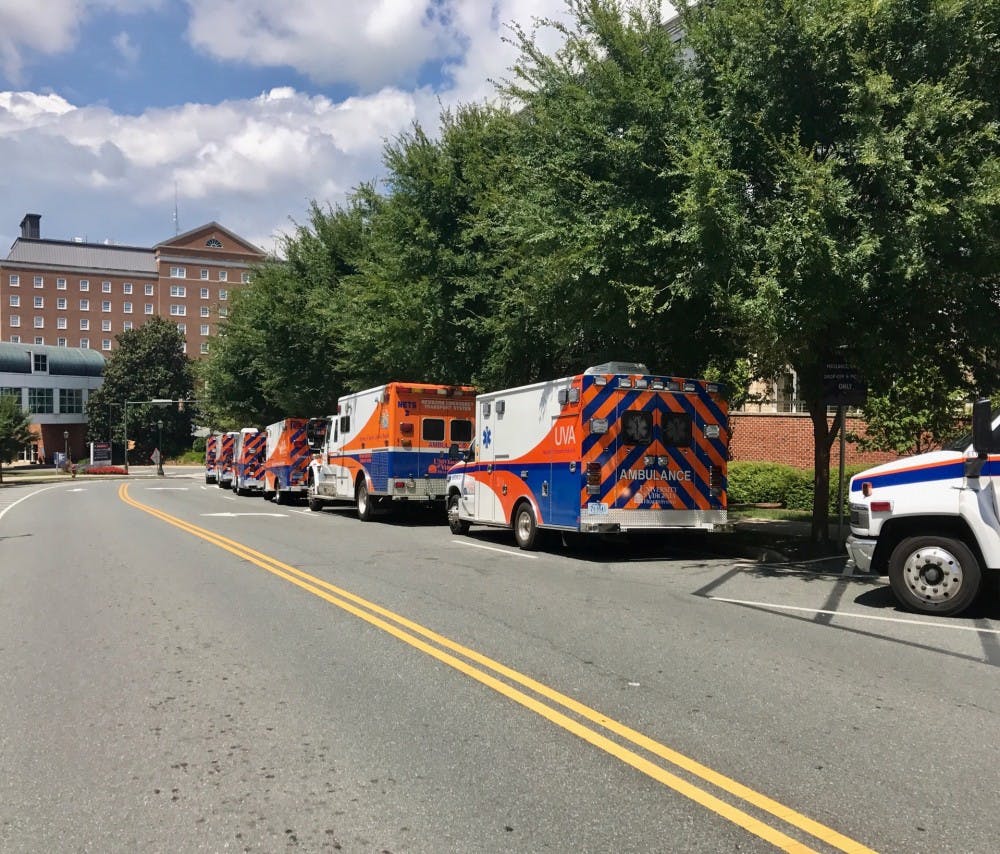The “Unite the Right” rally that took place in Charlottesville on Aug. 12 sparked violence — including a deadly car attack — which required a coordinated effort of many medical agencies.
The U.Va. Hospital had planned a protocol for the white supremacist rally on Aug. 12 for weeks, according to Dr. William Brady, Vice Chair of the Department of Emergency Medicine. Brady said that the hospital had prepared for the KKK rally on July 8 as a mass casualty event. However, the hospital anticipated that the rally on Aug. 12 would be on an even larger scale and therefore intensified its previous plans.
Thomas Berry, Emergency Management Director of the U.Va. Health System, said in an email statement that the general plans were based off of other mass casualty incidents in other communities and countries.
“We have studied and learned from incidents such as Paris, Orlando, Aurora over the past one+ [years] to integrate some of the recent lessons learned for massive surge situations,” Berry said in an email to the Cavalier Daily.
The hospital undertook many measures to ensure that it could handle an influx of patients who might be injured the day of the rally. For instance, it decompressed itself such that non-emergency surgeries the week of the rally were moved to the following week as to open up more space for patients. Additionally, the nurses and physicians from across hospital departments — including emergency medicine, trauma surgery and anesthesiology — were trained to handle mass casualty incidents.
Furthermore, the hospital set up a large command center at the event itself the Friday before the rally.
“The command center had medical and administrative leaders at the medical center where we could make quick decisions, move resources around and be ready to alter our approach if needed,” Brady said.
According to Brady, he and others were monitoring the situation through real-time video feeds and police and fire radio frequencies at the command center.
The hospital also increased its security in a three-part plan according to Berry.
First, the number of entrances to the hospital was restricted to two main doors through the use of badges. Second, barriers were placed at both ends of Lee Street so vehicles with patients could arrive more easily with less traffic. Last, access was further restricted to patient care rooms.
Preparation for the hospital response to the rally was an institution-wide effort. Brady said the planning was done by over a hundred leaders, including University President Teresa Sullivan.
“I really regret that a life was lost, but I think the hospital was as prepared as they could be to take care of the people,” Sullivan said.
Berry elaborated on the degree of detail that went into planning for the incident.
“The deliberate planning process included four major components — intelligence collection, small working groups for coordination and synchronization, a large working group to facilitate information sharing and a joint planning group for local, regional [and] state coordination,” Berry said in an email statement.
Most of the patients who were treated prior to the car attack suffered from lacerations — deep cuts — to the head.
“When the car struck the crowd, we saw that almost immediately on social media,” Brady said. “The police and fire frequencies reported it, and the command center at the event also called us. So when that happened, we immediately notified the other doctors and nurses at the institution.”
Third-year College student Nandan Srinivasa was working at the hospital the day of the rally as a medical scribe. His job entails recording details such as the patient’s medical history and reason for visiting. According to Srinivasa, the hospital received word that about 20 people had been injured by the car and were coming to the hospital for treatment.
According to Brady, triaging — a process where patients are sorted in the emergency room by urgency of care — was moved from the emergency department to the main lobby of the hospital after the car hit the crowd of people. Chief Medical Officer Dr. Chris Ghaemmaghami said that the triaging location was changed to accommodate a larger number of people.
“We were triaging in ambulances and out on the sidewalk right in front of the hospital, and then directing people to the ED from there,” Ghaemmaghami said.
Furthermore, the emergency department was put on EMS diversion so that non-critical patients would be diverted to Senatra Martha Jefferson Hospital for care. In an email statement from the hospital, the department said it treated 14 patients the day of the rally, with the majority of injuries related to trauma leg pain and head lacerations.
The hospital was in a hyperactive state with all the additional staff according to Ghaemmaghami.
“I had to see multiple traumas at the exact same time — one after another — but besides that I was able to see each trauma without much difficulty,” Srinivasa said.
According to Brady, the hospital handles multiple-injury events, such as car accidents, on a weekly basis. It is therefore well-prepared for mass-casualty events such as the rally.
“We activate our plans, we call in additional personnel when needed and we continue to take care of people,” Brady said.







